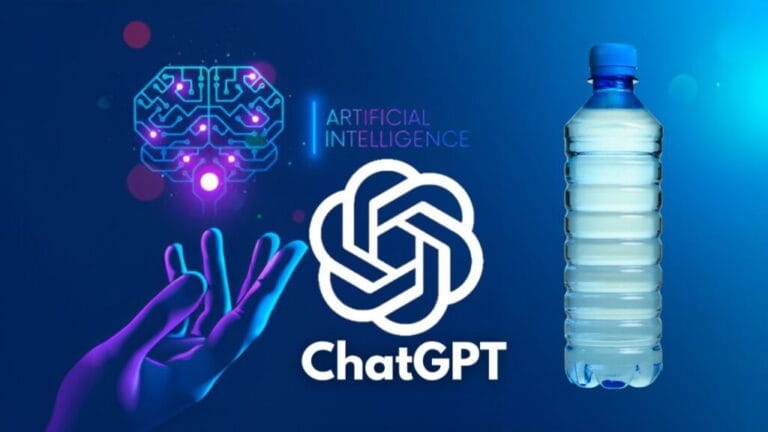As artificial intelligence absorbs an increasing share of global energy resources, the question of its environmental footprint becomes unavoidable. In a blog post titled The Gentle Singularity, Sam Altman, CEO of OpenAI, sheds light on the water consumption related to the use of ChatGPT.
A spoonful of water per request
According to Altman, each request sent to ChatGPT consumes an average of 0.000085 gallons of water – about one-fifteenth of a teaspoon. This consumption is related to the cooling of servers in data centers, necessary for the proper functioning of AI models. The energy used for each interaction is estimated to be 0.34 watt-hours, equivalent to a stove being on for one second or an LED bulb running for a few minutes.
While these figures may seem modest on an individual scale, their multiplication by millions of daily requests raises major questions about the sustainability of the model.
Images are more resource-intensive than texts
Text requests, such as those in ChatGPT, remain relatively modest compared to image generations. A 2023 study conducted by Hugging Face and Carnegie Mellon University estimated that a single image generated by AI could consume as much energy as a full smartphone recharge.
A race for profitability under pressure
Beyond ecological aspects, the economic costs of artificial intelligence are also concerning. OpenAI, which claims to have doubled its revenue to reach $10 billion by 2025, is still far from profitability. The goal set for 2029 is to achieve $125 billion in annual revenue. The issue lies in the massive investment required for data centers, which could amount to $200 billion by the end of the decade.
Free data… for now
Paradoxically, one of the largest cost items – the data necessary for training the models – remains absent from financial statements. The training of ChatGPT and other AIs relies on immense volumes of web content, often obtained without financial compensation for their authors. A legal void that some already refer to as the “greatest data theft in history.”
The location of data centers, a key factor
Finally, several experts qualify Altman’s statements, particularly regarding water consumption. According to a study reported by the Washington Post, a simple email generated by a GPT-4 model could consume the equivalent of a water bottle, depending on the location of the data center. In Washington State, where water is abundant, data centers prefer hydraulic cooling. In contrast, in drier Texas, electric air conditioning is used more.


